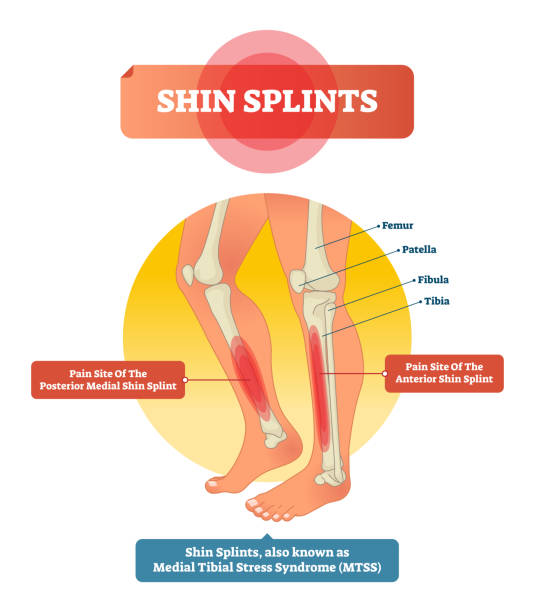
Shin Splints and Their Remedies
Share
At MDUB, we know just how painful shin splints can be, so along with providing our Shin Splint Strap, we want to offer up some key information regarding this frustrating and aching condition.
What are Shin Splints?
Shin splints refer to pain along the inner edge of the shinbone (tibia) due to overuse or repetitive impact. The condition is also known as medial tibial stress syndrome (MTSS). Shin splints often occur during high-impact activities such as running, playing basketball, or dancing. While shin splints can be extremely painful, they are usually not serious and can be treated with a combination of rest, ice, and over-the-counter pain relievers.

What Causes Shin Splints?
Shin splints are caused by overuse or repetitive impact on the shinbone and tissue surrounding it. This can happen when you suddenly increase the intensity or duration of your workouts without giving your body enough time to adjust. For example, if you're training for a marathon and you double the amount of mileage you're running every week, you're more likely to develop shin splints. Other risk factors for developing shin splints include wearing worn-out shoes with insufficient support, having flat feet or high arches, and having tight calf muscles.
The most effective treatment for shin splints is a combination of rest, ice, and over-the-counter pain relievers such as ibuprofen or acetaminophen. You should also try to avoid activities that aggravate your shin splints until the pain subsides. Compressing the inflamed area will also help - this is where the MDUB Shin Splint Strap comes in. If your shin pain persists despite these self-care measures, you may need to see a doctor or physiotherapist for further treatment. In severe cases of shin splints, surgery may be required to release the tension on the bone and surrounding tissue.

Why MDUB Shin Splint Strap?
Designed to deliver more isolated pressure, our Crosstrap Shin Splint Strap promotes blood flow, which encourages healing and reduces painful inflammation. With this isolated pressure, you will be able to pinpoint exactly where the pain is coming from and treat that specific area. Now, you will be able to train and feel relief, all at the same time!
